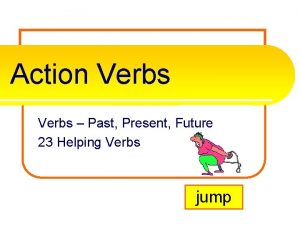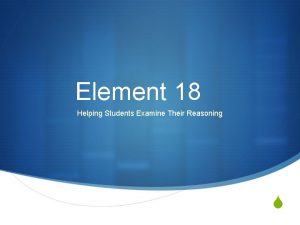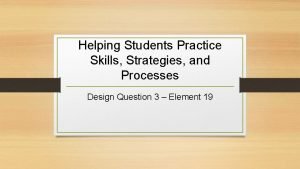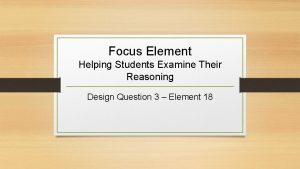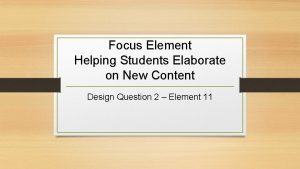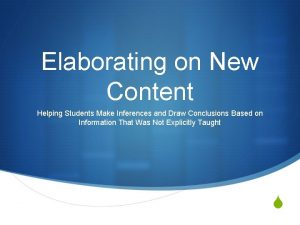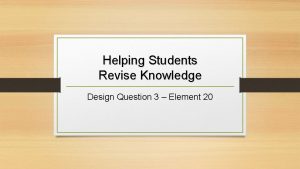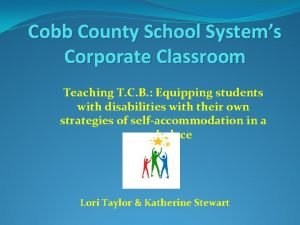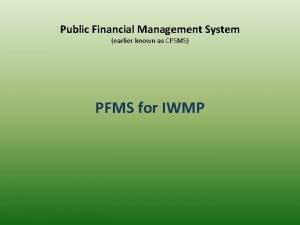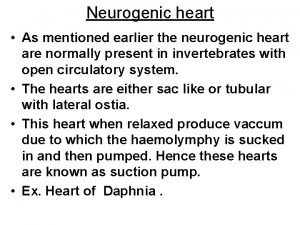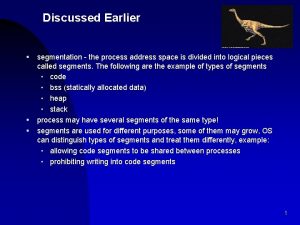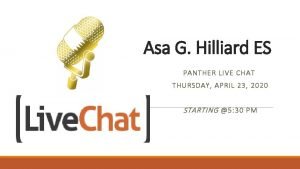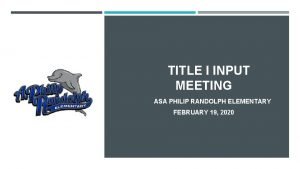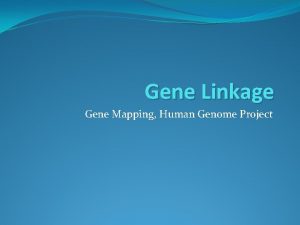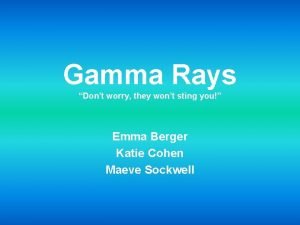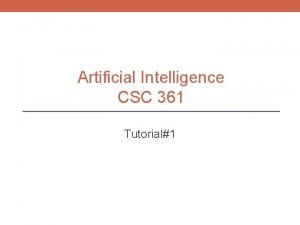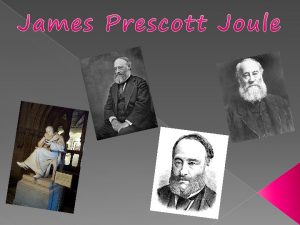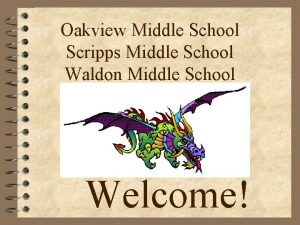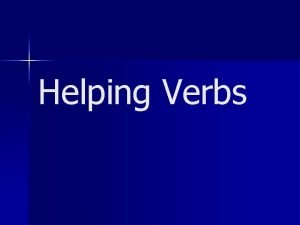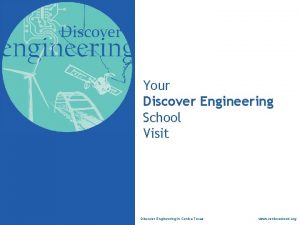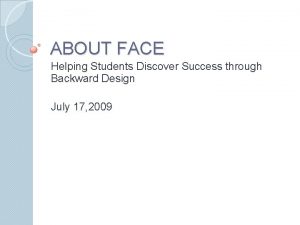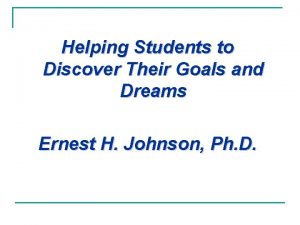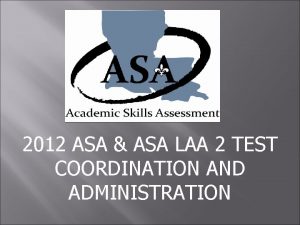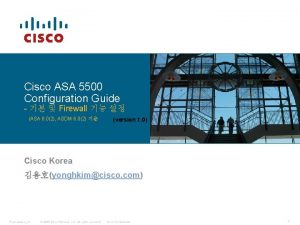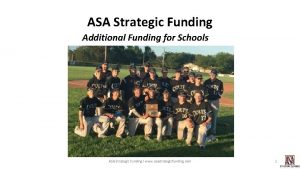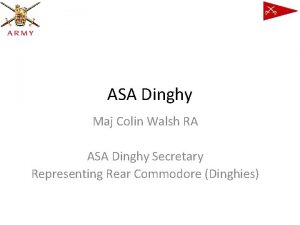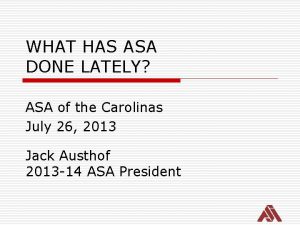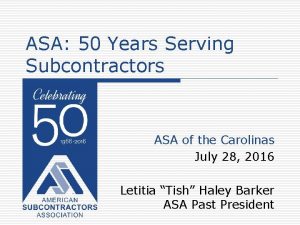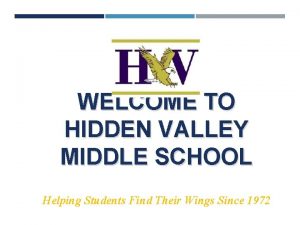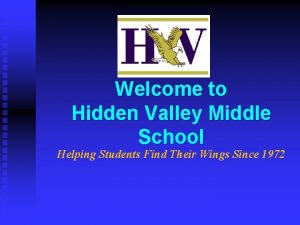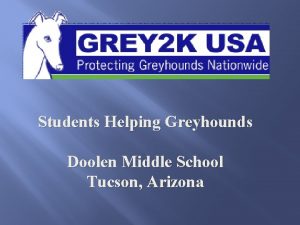ASA Exploring Earlier Helping Middle School Students Discover


































- Slides: 34

ASA Exploring Earlier: Helping Middle School Students Discover Education/Career Opportunities 2019 4 April 1 ASA

2 02 United States Widening Skills Gap Why Higher Education Shouldn’t Be Synonymous With College 03 04 Education and Career Exploration As Early As Middle School Operation Exploration Pilot 11/30/2018 01 ASA Contents

SECTION 01 United States Widening Skills Gap The Forces Transforming Our Job Market 01

Skills Gap Realities Many signs indicate our labor force is not equipped for the workplace of the future, or even today. Sources: U. S. Census Bureau, Bureau of Labor Statistics, Harris Poll Study • 40% of college grads lack the skills to perform their jobs. • 60% of companies report unfilled jobs due to lack of qualified workers. • 40% of employers report work not getting done due to a lack of skilled workers. • 6. 5 M jobs remain unfilled, yet unemployment rate is 3. 7%.

Our Transforming Job Market Gray Wave = Boomers retiring and taking skills with them Growing global competition • Low wages in emerging economies draw low-skill manufacturing offshore • High wage, high-skilled manufacturing remains; requires better-trained workforce Nearly 1 in 5 jobs today didn’t exist in 1980: Rapid tech progress = constant catch up Artificial Intelligence: replacing low-skill, middle-skill, and some high-skill workers

SECTION 02 Why Higher Ed Shouldn’t Be Synonymous With College 02 Why Traditional Higher Education Shouldn’t Be Just What’s Next

Fastest Growing Jobs In The United States 96% 30% Mathematician 31% Software Developer Source: Bureau of Labor Statistics 31% Physical Therapist Assistant 36% 34% Statistician Nurse Practitioner 37% Physician Assistant Growth Rate 2016 -2026 39% Personal Care Aide 105% 47% Home Health Aide Wind Turbine Service Technician Solar Photovoltaic Installer

Income Outlook $103, 880 $104, 860 $103, 010 $101, 790 $84, 060 $57, 430 $53, 880 $39, 490 $23, 100 $23, 210 Mathematician Software Developer Physical Therapist Assistant Statistician Nurse Practitioner Physician Assistant 2017 Median Pay Source: Bureau of Labor Statistics Personal Care Aide Home Health Aide Wind Turbine Service Technician Solar Photovoltaic Installer

Post-Secondary Ed Required Fastest Growth Jobs High School Diploma • Home/Personal Care Aide Technical Non-Degree • Solar Photovoltaic Installer • Wind Turbine Service Technician Associates Degree • Physical Therapy Assistant Bachelor’s Degree • Software Developer High School Diploma Associates Degree Master's Degree Source: Bureau of Labor Statistics Technical Non-Degree Bachelor's Degree Master’s Degree • Physician’s Assistant • Nurse Practitioner • Statistician • Mathematician

Unsound College Choices Making emotional college choices Deciding without considering: 1) Reasons to attend certain school 2) True cost of attendance, amount borrowed, and how to repay 3) Career options before choosing college or program

College Choice Factors Was your final choice of college primarily due to: Factors Considered: Location Major Cost Name recognition School counselor Friends Family Good Academic Fit Source: ASA Life Delayed Study 7% 20% [VALU E] [VALUE] Good Financial Fit Good Emotional Fit None of the Above

Post-Secondary Education Planning What major factor was missing from the college choice decision? Careers

Different Pathways To 4 -Year Degree When you were thinking about college, did family members or guidance/college counselors ever talk to you about the following alternative means of getting a degree from a 4 -year school? Please select all that apply Delayed enrollment (gap year or working before enrolling) Taking classes online Enrolling in community college first and transferring credits No, these options were not discussed with me Source: ASA Research, 2018 10% 15% 20% 63%

Problems Facing College Students Today Sources: College Board Trends, Federal Reserve, TICAS, Bureau of Labor.

Championing The Non-4 -Year Degree Four-Year Degree Realities: Not necessarily providing skills needed for today’s and tomorrow’s economy Return on investment must be evaluated More than half are not completing these degrees Non-Four-Year Degree Realities: Skill development High demand jobs Median annual salary of all non-four-year degree programs only $11 K less than bachelor’s degree recipients, but see average savings of $114 K over cost of repaying a bachelor’s degree for 10 years ($11, 400/year) More job security because skills are needed and not easily exported Sources: NCES, Federal Reserve

Important To Note College access doesn’t equal success Remind students and families that getting into college is a significant accomplishment to be celebrated, but getting into college: Is not the end destination Is not the ultimate goal Is one step in the execution of a plan The end goal should be a fulfilling career that meets the student’s interests and skills College access is getting IN, getting THROUGH, and successfully REPAYING student loans obtained to achieve the degree

4 -Year Degree Return On Investment Is Not Equal Low-income BA recipients begin careers earning 66% as much as higher-income BA recipients; this ratio declines to 50% by mid-career and 70% by late-career Source: Brookings Institution calculations from the Panel Study of Income Dynamics, 2016

4 -Year Degree Return On Investment Is Not Equal 25% less 30% less At the highest education level, African Americans and Latinos earn close to a million dollars less than their white and Asian counterparts over a lifetime. Sources: U. S. Census Bureau, 2009 -2013 American Community Survey, BRA Research Division Analysis; https: //cew. georgetown. edu/cew-reports/the-college-payoff/

Education For Viability In The st 21 Century Market Should a 4 -year degree still be the primary goal? Skills development Credentials needed for the jobs of today and tomorrow Increased investment in apprenticeships On-the-job training These are all essential components of post-secondary education – are there earlier solutions?

SECTION 03 Education & Career Exploration As Early As Middle School Why Earlier Awareness Leads To Better Planning For Post-Secondary Education 03

Typical Student Awareness Timeline Middle School High School • High school choice • Class registration • College major • Ed. pathway • Career plan • Class registration • College choice • College financing • Interest inventory College Post-College • Career execution • Loan repayment

Research Indicates High School Is Too Late Research shows middle school is the time when students can benefit the most from education and career exploration High school challenges: • • • Not enough time to plan Too late to consider all options Too late to prepare No time for modifying plans Late planning leads to debt burden Source: ACTE Research, 2018 Middle school engaged at 80% High school engaged at 40%

Middle School Should Be New Target Education/career conversations should begin in middle school to provide time to explore/experiment before high school ends • Plant seeds • Interest inventories • Skill development • Give kids opportunities to explore • Effective high school choice planning • Job shadowing; internships; part-time jobs to match career interests & goals • Educated post-high school education planning = students and parents

Perkins V Previously: CTE funds only allocated to grade 7 and above Now: CTE funds can be allocated to “middle grades” – defined as Grade 5 through Grade 8 generally (states may vary)

Middle School Outreach • Find connections between academics, education interests, and career interests • Set good financial literacy foundation • Set goals for getting college and career information • Promote college AND career planning in middle school* • Promote creative and interactive career exploration programs and activities

Middle School Outreach College and career planning ideally begins in middle school Middle School Outreach: • • Must be engaging Must match their intellectual and social-emotional development Learn through teamwork and real-life scenarios Active, hands-on, and fun Outside of the formal classroom Consistency Must be quick

SECTION 04 Operation Exploration Pilot A Promising Education and Career Exploration Program Designed for Middle School Students 04

Operation Exploration • Grades 7 to 10 (majority 8 and 9) • Monthly sessions January – August • Games and activities to foster engagement • Local professionals share their own experiences in choosing education & career pathways* • Goal = Practical knowledge & actionable steps to make informed decisions for college & career Emphasis Jobs of tomorrow Exploring interests Experimenting

Concerns About Middle School Exploration Past: ‘Career exploration’/vocational education = TRACKING Present: In many districts, concerns about tracking remain

Take Back The Definition of Tracking Career exploration = helping to keep kids on track to success Developing career interests is not about narrowing focus; its exposure to multiple pathways and understanding transitions

Claim Your Future Encourages Students To: 1) Have conversations about their goals and aspirations 2) Link today’s educational & spending choices to future job options & financial stability 3) Distinguish between wants and needs; learn to prioritize* 4) Describe benefits of saving and impact of long-term debt

Operation Exploration Metrics • 92% = pursuing education beyond high school after program (12% increase) • 53% = confident in ability to evaluate best post-high school education option • 92% = more motivated to research the best post-high school option for them • 88% = more motivated to plan for life after high school • 82% = felt they could effectively manage their finances • 68% = felt they knew how to achieve financial goals

Resources and Takeaways ASA School Counselor Survey https: //file. asa. org/wp-content/uploads/2018/08/14141839/School-Counselors -and-College-Financial-Fit. pdf ASA Life Delayed Survey https: //file. asa. org/wp-content/uploads/2019/01/28203317/Life-Delayed 2015. pdf BLS Occupational Outlook Handbook = https: //www. bls. gov/ooh/ Claim Your Future = https: //www. claimyourfuture. com/

 What can we discover by exploring nature
What can we discover by exploring nature What are the 23 action verbs?
What are the 23 action verbs? How to help students examine their reasoning
How to help students examine their reasoning Helping students practice skills strategies and processes
Helping students practice skills strategies and processes Helping students examine their reasoning
Helping students examine their reasoning Helping students elaborate on new content
Helping students elaborate on new content Helping students elaborate on new content
Helping students elaborate on new content Learning target
Learning target Helping students revise knowledge
Helping students revise knowledge At cobb middle school students with learning disabilities
At cobb middle school students with learning disabilities Dr miguel morayta rizal
Dr miguel morayta rizal Ach cpsms
Ach cpsms Conditionals
Conditionals Why would smith add on to his earlier story?
Why would smith add on to his earlier story? Earlier because
Earlier because On the eve of world war i, bosnia was ruled by... *
On the eve of world war i, bosnia was ruled by... * Past perfectگرامر
Past perfectگرامر Neurogenic heart is present in
Neurogenic heart is present in Java swings
Java swings Geographic isolation
Geographic isolation As discussed earlier meaning
As discussed earlier meaning Public financial management system was earlier known as
Public financial management system was earlier known as Asa g hilliard elementary
Asa g hilliard elementary Asa philip randolph elementary school
Asa philip randolph elementary school When did christopher columbus discover america
When did christopher columbus discover america Kaliumis iodi
Kaliumis iodi Gene linkage
Gene linkage Gamma ray discover
Gamma ray discover Page 113 of fahrenheit 451
Page 113 of fahrenheit 451 Discover your smile
Discover your smile What did james chadwick discover
What did james chadwick discover Playing a decent game of table tennis (ping-pong)
Playing a decent game of table tennis (ping-pong) James prescott joule contributions
James prescott joule contributions The maze runner vocabulary by chapter
The maze runner vocabulary by chapter Tracheal gills
Tracheal gills

